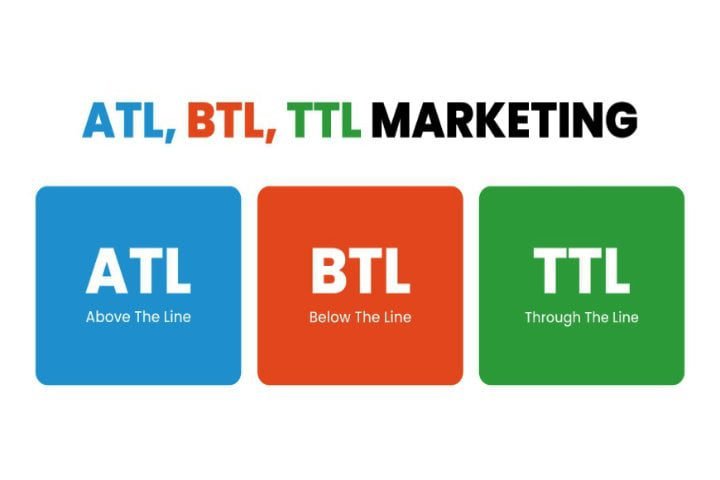Concept of Market
A market refers to an arrangement where buyers and sellers come in contact with each other directly or indirectly to buy or sell goods. Face-to-face contact between buyer and seller is not necessary for the market. E.g. In the share market, buyers and sellers transact through the Internet. To understand the concept of market comprehensively, it is first essential to learn that markets are dependent on two significant participants:
- Buyers
- Sellers
Buyers and sellers typically trade goods, services, and/or information.

Types of Market
In India, we have all sorts of markets, from local street markets to huge ones like the stock market. Let’s break it down:
- Street Markets: You can easily find colorful markets in your neighborhood in India. Vendors sell fresh fruits, vegetables, clothes, and other goods. When you buy some fruits or a new pair of shoes here, you participate in a small-scale market. The prices often depend on supply and demand. For instance, sweets might be pricier during festivals because more people want them.
- Farmer’s Markets: These are markets where farmers set up stalls to sell their freshly harvested produce. At these markets, one can buy fruits or vegetables directly from the participating farmers.

- Stock Market: It is like a giant marketplace for buying and selling tiny pieces of ownership in big companies. For instance, if you buy shares in Tata Motors, you own a small part of the company.

- Digital Markets: In today’s world, markets are not just in physical places but also online. Think about e-commerce websites like Amazon or Flipkart. You’re participating in a digital market when you buy a smartphone or book online. Here, prices can change rapidly based on discounts, customer reviews, and the product’s popularity.

- Real Estate Market: There are real estate markets where buyers and sellers come together to trade properties. Here, prices can vary depending on the location, size, and demand. In India, the Real Estate Regulatory Authority (RERA) was established in 2016 under the Real Estate (Regulation and Development) Act to regulate the real estate sector and address home buyers’ issues.

- Job Market: When searching for a job or trying to hire someone, you’re navigating the job market. Here, your skills, experience, and the demand for specific job types play a role in determining your job’s value and salary.

- Commodity Market: India is known for its diverse agriculture. In the commodity market, goods like rice, wheat, and spices are traded. Farmers and traders use this market to buy and sell these essential items, and their prices can change based on weather conditions, government policies, and international demand.

Essential Features of a Market

A market has the following features:
- Buyers and sellers: A market is where buyers and sellers exchange goods and services. The buyers have a demand for the goods or services, and the sellers have a supply of those goods or services.
- Commodity: The commodity is the goods or services exchanged in the market. It can be a physical product, such as a car or a computer, or a service, such as a haircut or a doctor’s appointment.
- Price: The price is the amount of money exchanged for the commodity. The forces of supply and demand determine it.
- Place: This is where buyers and sellers come together to exchange goods and services. It can be a physical place, such as a grocery store mall, or a virtual place, like an online marketplace.
- Promotion: Promotion is communicating the availability of goods and services to potential buyers through advertising, public relations, or personal selling.
In addition to these five features, other factors can also affect a market, such as the level of competition, government regulations, and economic conditions.
Structure of Market

Here are the critical elements needed to clearly understand the concept of market:
- Number of Sellers: Is there only one seller for a particular product, or are there others? If there are many, it’s a competitive market. If there is only one, it’s a monopoly market. The number of sellers sets the stage for how a seller will operate in the market.
- Product Differentiation: What makes a seller’s product unique? Is it the Quality, the price, or how they package it? Knowing how a product differs from others in the market helps a seller stand out.
- Entry and Exit Barriers: Is a marketplace open for all sellers or restricted to a few? High barriers, like needing money or special permits, can limit new competitors. Low barriers mean more competition.
- Information Availability: How easily can customers find price and quality information? Information is often readily available in today’s digital age, influencing how you market your product.
- Price Control: Can a seller set the price of their product, or does the market (customers and competitors) decide it? Supply and demand determine prices in some markets, like those with perfect competition. In others, like a monopoly, sellers have more control.
- Buyer Power: Do customers have many options, or are they pretty much stuck with the availability of a few offerings? The more choices they have, the more power they have to decide prices and quality.
- Seller Power: Are the sellers in a solid position to dictate terms, or are they at the mercy of suppliers and buyers?
- Market concentration: Does the market have a small number of major players or a large number of minor ones? If a few companies have a considerable product offering, it’s a concentrated market.
Based on the above criterion, there are four main types of market structures:
- Perfect competition: This is a theoretical market structure in which there are many sellers and buyers, the products are homogeneous, and there is no barrier to entry or exit. In perfect competition, many sellers sell a single product without any advertisement. In this type of market, businesses have very little control over price and must compete on price and quality. Also, buyers have perfect knowledge about the product, and there is government protection without interference.
- Monopolistic competition: This market structure has many sellers, but the products are differentiated. This means each seller has a unique product that is slightly different from the other sellers’ products. In this market, businesses have some control over price but are still subject to competition from other sellers.
- Oligopoly: This is a market structure with a few sellers. The products in this type of market may be homogeneous or differentiated. In an oligopoly, businesses have significant control over price, but they are also aware of their competitors’ reactions.

- Monopoly: This is a market structure with only one seller. The product in this type of market is unique, and there are no close substitutes. In a monopoly, the seller has complete control over the price and can charge whatever they want. In India, the government monopolizes atomic energy, defense, public water supply systems, railways, etc.
The structure of a market can have a significant impact on a business’s marketing strategy. For example, a business operating in a perfectly competitive market must focus on price and quality to compete. A business operating in a monopolistic, competitive market can differentiate its product and focus on branding and advertising. A business operating in an oligopoly must carefully consider its competitors’ reactions when setting prices and making marketing decisions. A business operating in a monopoly has a lot of freedom to set prices and market its product, but it must be careful not to abuse its power.
Market Structure in Real World Situation in India
There are very few markets in India that can be considered perfectly competitive. One example is the agricultural market for wheat. Many farmers sell wheat, and the product is homogeneous. There are also no barriers to entry or exit, so anyone can start farming if they want to.
Many markets in India can be considered monopolistic and competitive. For example, the retail clothing market is monopolistic and competitive. There are many clothing stores, but each store sells different brands and styles of clothing. There are also some barriers to entry, such as the need for a store location and inventory.
Some markets in India can be considered oligopolistic. For example, the airline industry is oligopolistic. There are a few major airlines, and they compete with each other for customers. The products (airline tickets) are differentiated, but there are also some similarities (they all fly to the same destinations). There are also some barriers to entry, such as the need for a fleet of airplanes and a network of routes.
There are a few monopolies in India. For example, the state-owned Bharat Sanchar Nigam Limited (BSNL) is India’s monopoly provider of landline telephone services.
The market structure in India is constantly evolving. New markets are emerging, and existing markets are changing.
- The factors that affect the market structure in India include the size of the market, the level of economic development, government regulations, and the presence of multinational corporations.
- The market structure can significantly impact the prices of goods and services, the quality of products and services, and the level of innovation.
- Businesses need to understand the market structure in which they operate to make informed decisions about their marketing strategy.










